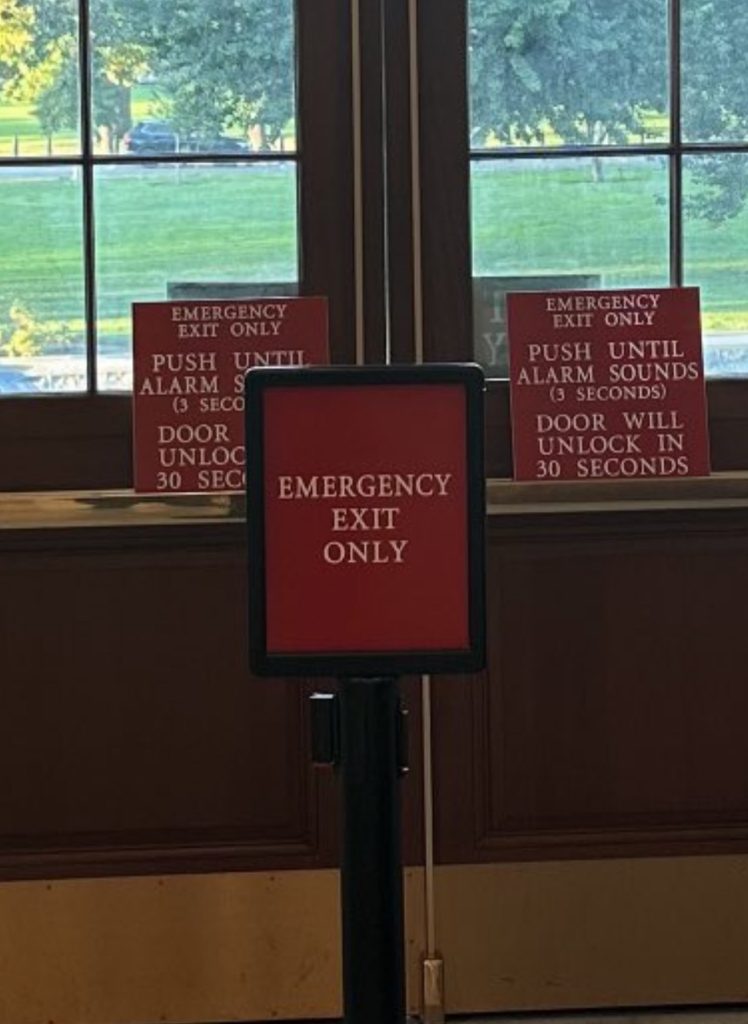When you are in the discourse for as long as I have been, you start to spot certain patterns of discursive behavior. One such pattern is that groups of people who are loosely affiliated in some way will create and then reinforce myths and misinterpretations about individuals and institutions that don’t make any sense.
What’s interesting about this pattern is that its primary goal does not appear to be the usual goals of smearing and lying. Instead, the behavior seemingly serves some kind of group cohesion purpose, so much so that the more the belief is revealed as ridiculous, the more ostentatiously people signal that they believe it.
The recent discourse surrounding Jamaal Bowman pulling the Cannon building fire alarm is an interesting case study.
The background for this story is that, on Saturday, Congress was rushing to pass a continuing resolution to avoid a government shutdown. When the House was called to vote, the representatives had to move quickly from their offices in the Cannon, Rayburn, and Longworth buildings to the Capitol building in order to cast their vote.
At this time, Bowman walked to an exit to the Cannon building and pulled a fire alarm at that exit. The exit looked like this:

In a later statement, Bowman explained that he was rushing to vote for the resolution to avert a government shutdown, went to an exit that is usually open for votes, found that it was not open, misread the sign — presumably as “push alarm until sounds” — and surmised that pushing the alarm by the door would cause it to open.
In this telling, Bowman made a comical mistake and certainly it’s fun and reasonable to joke about it. Even he says in his statement that the whole thing is pretty embarrassing.
But rather than tease Bowman, conservatives have quickly converged around an alternative theory that makes absolutely no sense: Bowman pulled this fire alarm in order to stop or delay the vote on the continuing resolution. As part of this alternative theory, conservatives even whipped themselves into a frenzy to expel Bowman, with one representative introducing a resolution to do so.
There are three very obvious problems with this theory:
- Pulling a fire alarm in the Cannon office building would not stop or delay the vote in the Capitol building.
- Bowman wanted the vote to happen. He, along with every other House Democrat except for one, supported the resolution.
- After pulling the alarm and finding that the door still did not open, Bowman ran to another door, exited it, went to the Capitol, and voted for the resolution.
So in this theory, Bowman pulled an alarm in a building other than the one where the vote was happening, in order to stop the vote on something he wanted to pass, and then, rather than not showing up to the vote and blaming the fire alarm, actually went to the vote. What?
On this theory, I guess Bowman must have also planned this out very carefully by walking to a door that had these signs about activating an alarm to exit, thereby giving him plausible deniability.
As I noted up top, nobody really cares at all that this makes absolutely no sense even on its own terms. In fact, the more you point out that this is totally incoherent, the more people seem to be attracted to expressing that they believe it. I’ve seen this dozens of times now and so it’s not particularly surprising, but it is obviously somewhat disconcerting in a world where we are all supposed to at least be pretending to be engaging in deliberative democracy.